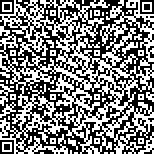| 摘要: |
| [摘要] 目的 对经皮扩张气管切开术(percutaneous dilational tracheostomy,PDT)和外科开放性气管切开术(open tracheotomy,OT)进行对比分析。方法 选取2008-10~2016-09在该院重症医学科398例需行气管切开手术的患者作为研究对象,根据患者颈部解剖情况分为解剖正常组、相对困难切开组和困难切开组,每组按术式分A、B两组,其中A组行PDT术,B组行OT术,术式按照序贯法进行选择。比较PDT和OT在手术时间、切口大小、术中出血量、切口愈合时间和术后并发症上的差异。结果 在解剖正常组、相对困难切开组和困难切开组中,A组的手术时间、切口大小、术中出血量、切口愈合时间均明显小于B组(P<0.05)。在解剖正常组和相对困难切开组中,A组的术后并发症总发生率(6.2%和10.3%)明显低于B组(65.6%和76.9%)(P<0.05);在困难切开组中,A组与B组的术后并发症总发生率差异无统计学意义(P>0.05)。结论 PDT在普通气管切开患者中较OT迅速、简单、创伤小,但在困难切开患者中无法替代OT。在部分困难气管切开中,外科操作借鉴PDT技术较单一外科切开更安全,能明显降低手术难度和手术风险。 |
| 关键词: 经皮扩张气管切开术 外科开放性气管切开术 困难气管切开 术后并发症 |
| DOI:10.3969/j.issn.1674-3806.2018.07.07 |
| 分类号:R 653 |
| 基金项目:茂名市科技计划项目(编号:20150336) |
|
| Comparative analysis of percutaneous dilational tracheotomy and operational tracheostomy |
|
YANG Zhi-yong, DENG Yan-sheng, LIN Kang-yue
|
|
Department of Neurocritical Care, the People′s Hospital of Maoming City, Guangdong 525000, China
|
| Abstract: |
| [Abstract] Objective To analyze the surgical outcomes of percutaneous dilational tracheotomy(PDT) and operational tracheostomy(OT). Methods 398 patients undergoing tracheotomy in our critical-care unit from October 2008 to September 2016 were investigated. All the patients were divided into the normal tracheotomy group, the relatively difficult tracheotomy group and the difficult tracheotomy group according to their different neck dissections, and each group was further divided into group A and group B according to different surgical methods. Group A was treated with PDT, and group B with OT. The surgical methods were chosen by sequential method. The operation time, incision size, bleeding volume during operation, wound healing time and postoperative complications were compared between group A and group B. Results In the normal tracheotomy group, the relatively difficult tracheotomy group and the difficult tracheotomy group, the operation time, incision size, bleeding volume during operation and wound healing time in group A were significantly shorter or smaller than those in group B(P<0.05). In the normal tracheotomy group and the relatively difficult tracheotomy group, the total incidence rates of postoperative complications in group A(6.2% and 10.3%) were significantly lower than those in group B(65.6% and 76.9%)(P<0.05), but in the difficult tracheotomy group, there was no significant difference between group A and group B(P>0.05). Conclusion For the common tracheotomy operation, PDT is simpler, quicker and has smaller trauma than OT. For the difficult tracheotomy operation, PDT cannot replace OT, however, in some cases, performing surgical operation based on PDT technology is safer than single surgical incision because of significantly reducing the operation difficulty and risk. |
| Key words: Percutaneous dilational tracheotomy(PDT) Open tracheotomy(OT) Difficult tracheotomy Postoperative complications |

